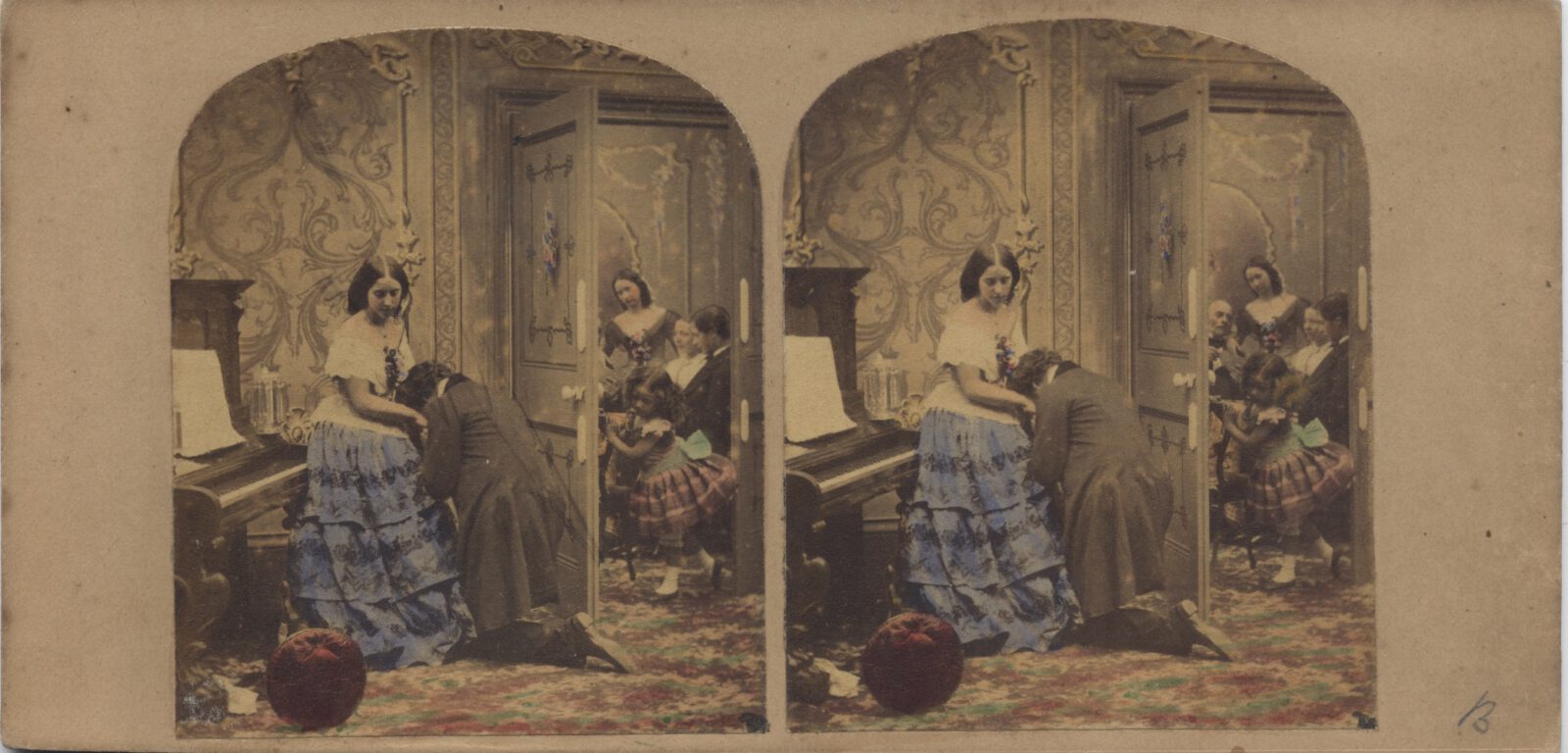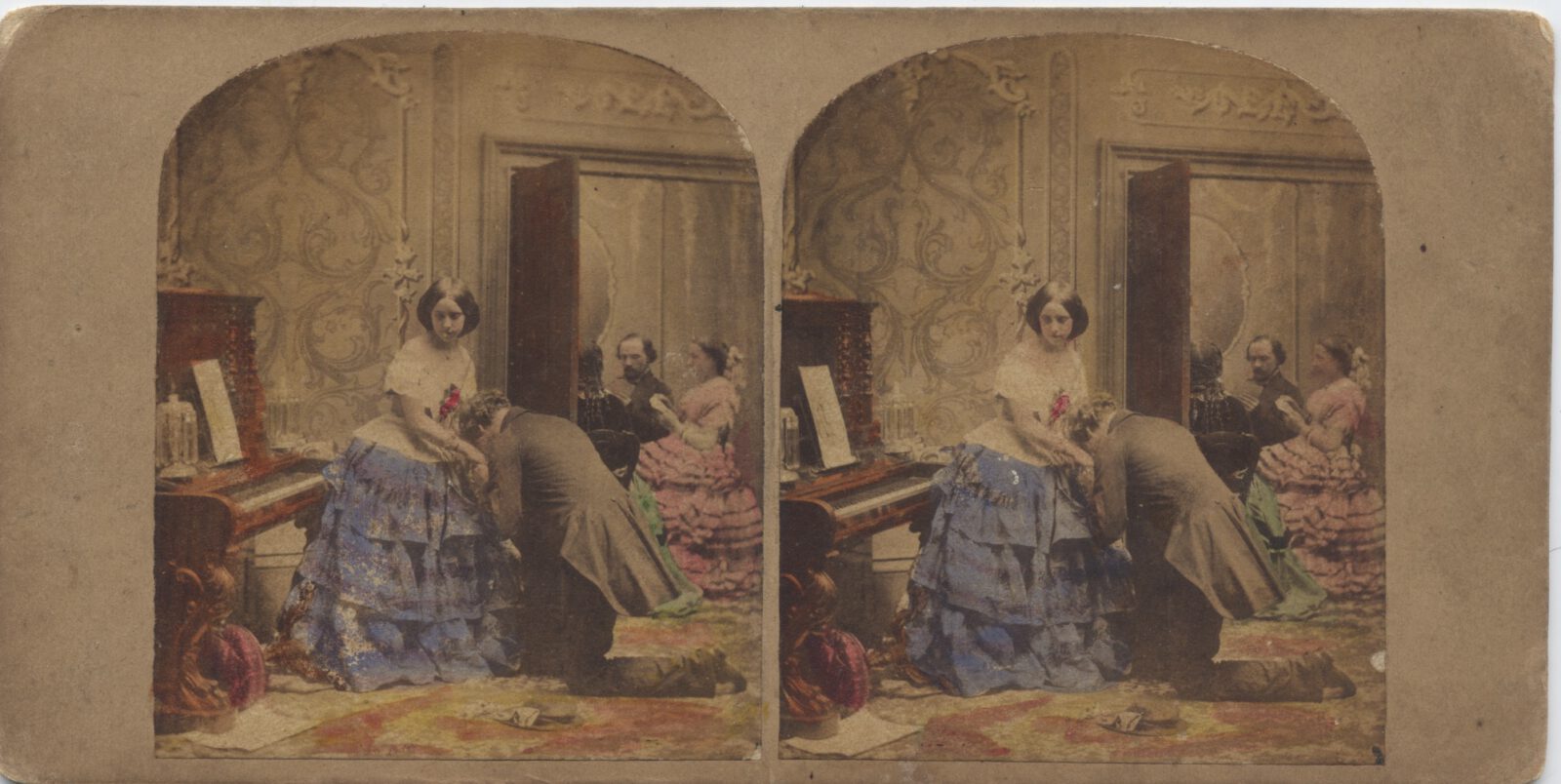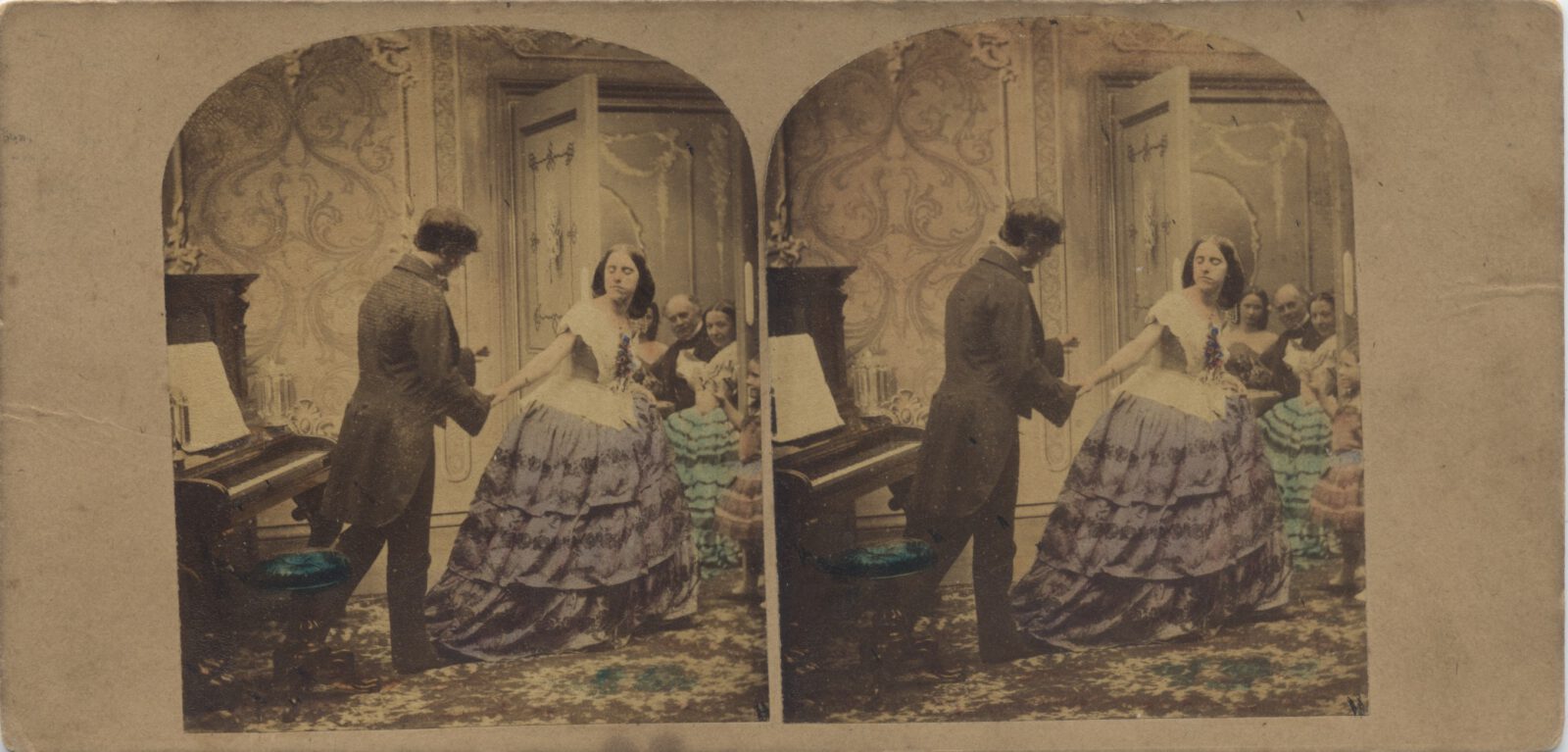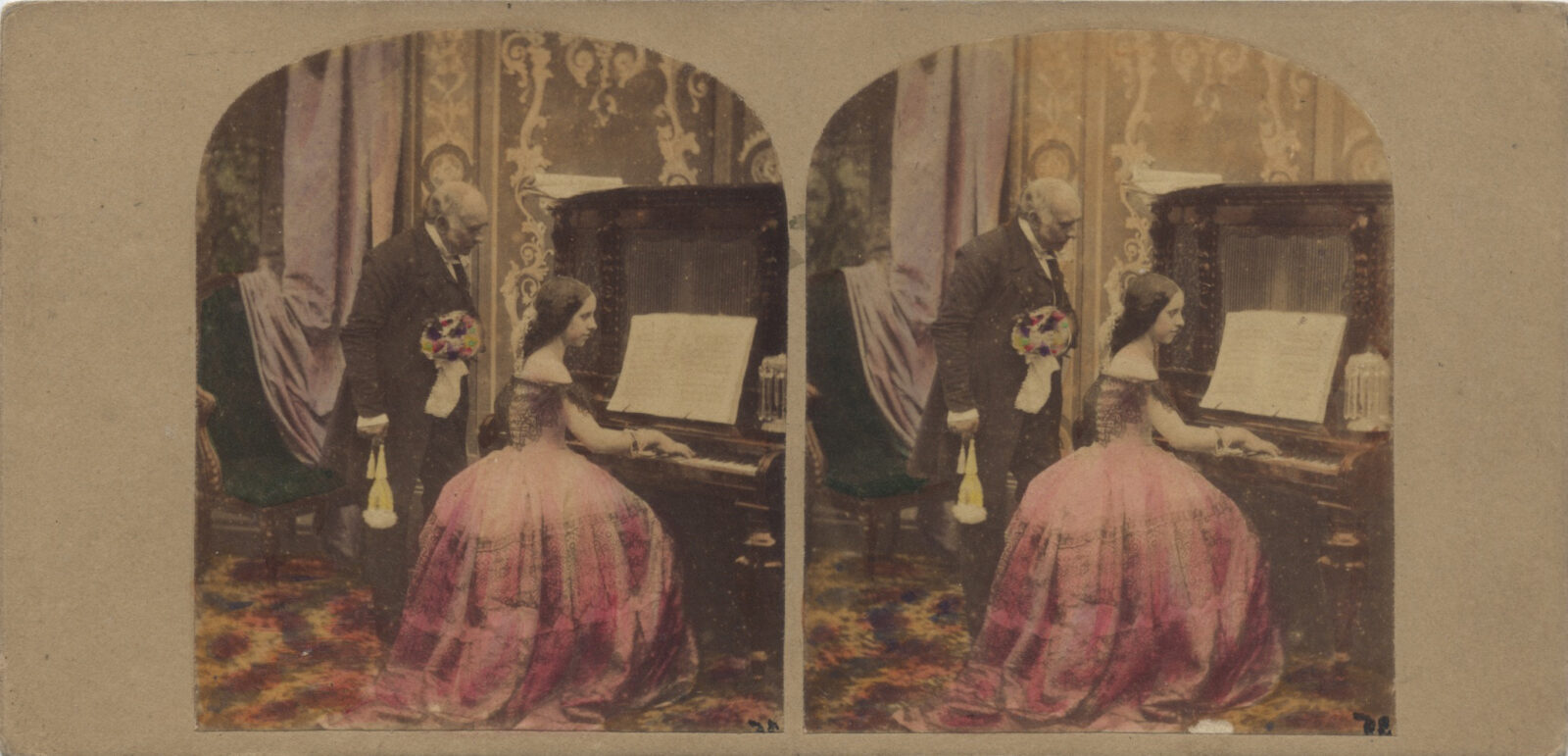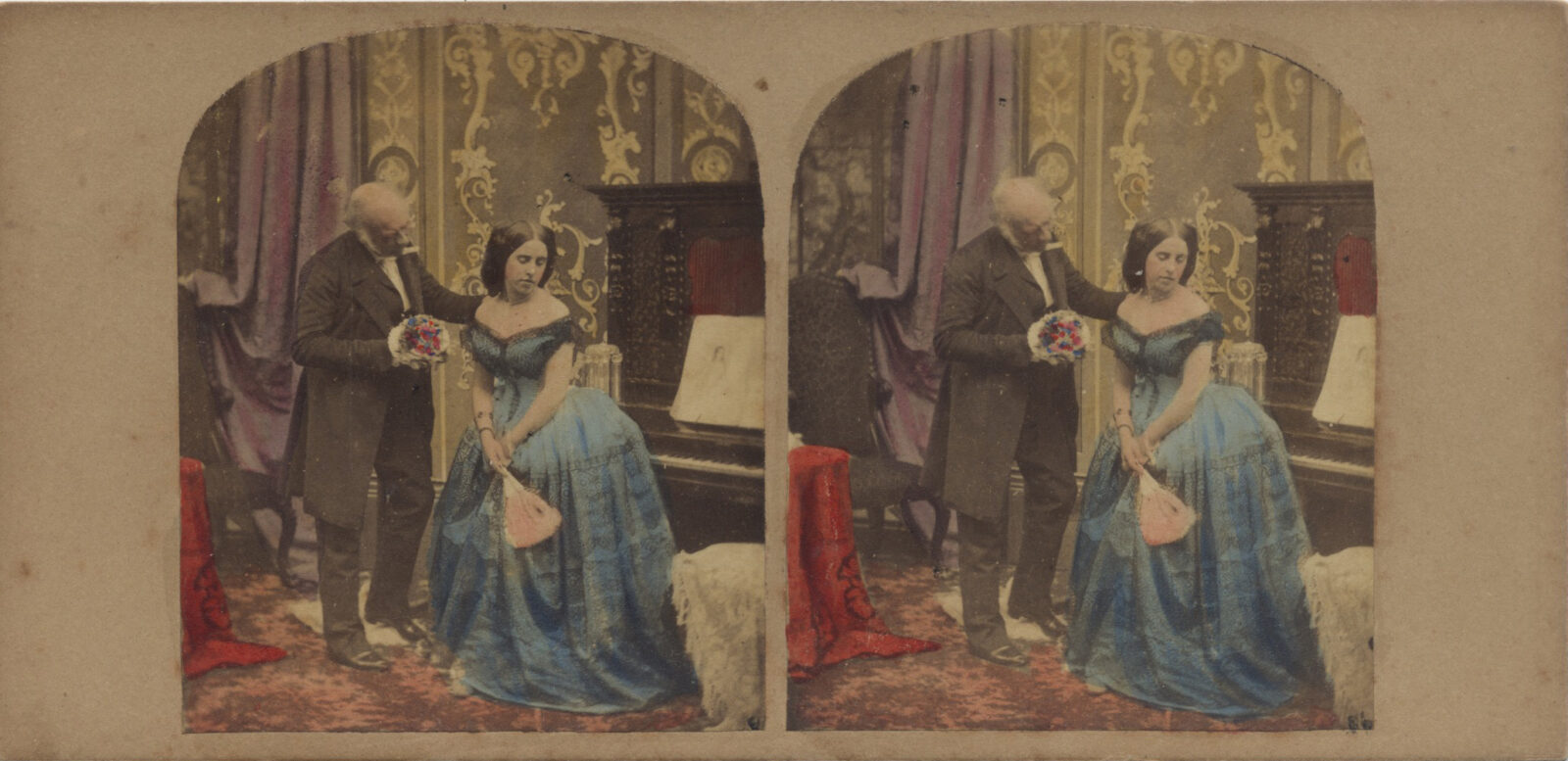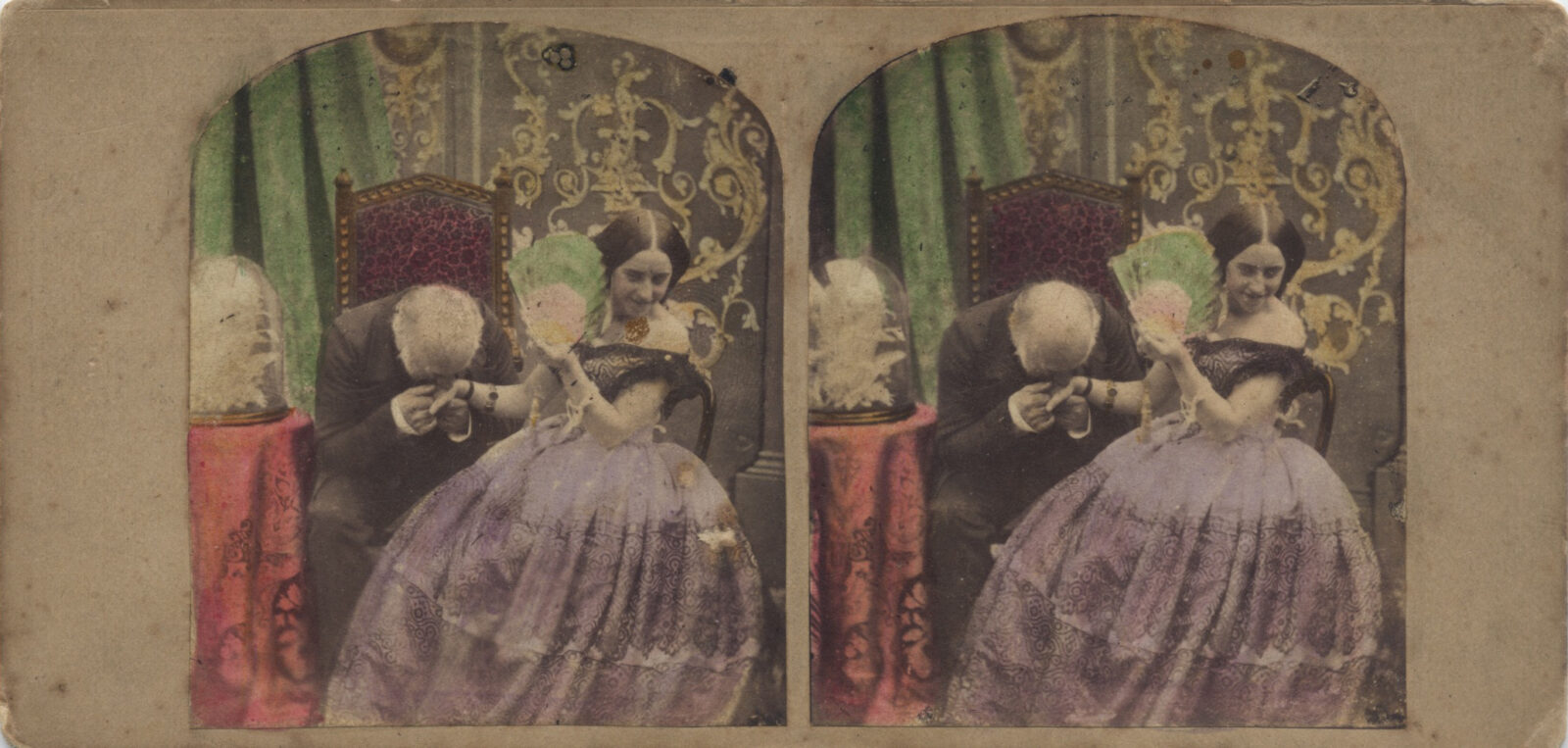A Declaration of Love
written for the stereosite by Jonathan Ross, UK
Alfred Silvester’s 1857 series of stereoviews entitled ‘Declaration of Love’ begins with a scene depicting a young woman seated at the piano in a smartly decorated room with elaborate wallpaper and plasterwork and what appears to be a fitted carpet, as opposed to the rugs on a wooden floor that you see in many Victorian interiors. The young woman is wearing an off-the-shoulder lacy top with a corseted waist, a full skirt and crinoline. A young man is standing close beside her, leaning over to turn the pages of her music. The door is open to the next room where a family can be seen sitting around a table, chatting and playing cards, while a little girl in her best party dress is peeping round the door, listening to the music and perhaps hoping to see what her sister and the young man are up to. It is a scene typical of the ‘Evenings at Home’ style also favoured by Silvester’s rival James Elliott, and the ‘Evening Music’ of the Gaudin Brothers, offering a glimpse into the lives of a prosperous upper middle class family.
A number of variants of the scene exist, with the camera in the same position but the figures positioned differently, allowing one to read a sequence into the events though, as they are not numbered, it is not clear whether that was intentional. I choose to place them as follows.
The young woman has finished playing her music and has risen to her feet. The young man seizes the opportunity and kneels at her feet, taking her hands in his and kissing them fervently, declaring his love. The little girl in the doorway is a witness.
In a variant of the scene, the little girl is not present so I imagine that she has gone next door to tell Papa that her sister has received a proposal.
In the final variant of the scene I have found to date, the young man is on his feet, still holding his beloved’s hand and looking imploringly in her direction while she moves towards the next room. Her expression is noncommittal but the little girl is smiling as are the people in the next room, so we trust that this declaration of love will meet with approval all round.
As the older reader knows, the male heart does not cease to beat faster in the presence of a beautiful young woman as we pass middle age, and Alfred Silvester used the same title ‘Declaration of Love’ for another set up showing a young woman at the piano but this time accompanied by an older gentleman with white hair, side whiskers and a receding hairline. He stands attentively beside her as she plays, holding her fan for her in one hand and a bouquet of flowers in the other.
In a variant of the scene, the young lady is standing, holding her fan and looking modestly away as the gentleman proffers the bouquet and declares his love for her. We do not know how she feels but her body language suggests that this proposal is not entirely welcome.
‘Declaration of Love’ is also the title of the following stereoview, presumably photographed on a separate occasion, as while the gentleman appears to be the same one, the young lady is dressed differently. They have moved away from the piano, which can be seen in the background, and the young lady is seated on a high backed chair while the gentleman kneels awkwardly beside her, pressing her hand to his lips. In this scene there is no doubt of her reaction as she turns away from him her hand raised to conceal the expression of amused disbelief. She clearly finds this proposal absurd and one hopes she has the kindness to let the old chap down lightly (and perhaps help him to his feet).
Under his pseudonym of ‘Phiz’, used at times of financial difficulty (he was a serial bankrupt), Silvester issued a variant of this scene entitled ‘May and December’ in which the (seated) old gentleman can again be seen declaring his love for a young woman whose likely response can be seen on the face she hides behind a fan. The ‘skeleton leaves’ we can see under a glass dome on the table beside him draw attention to his decrepit condition while the title clearly expresses the disparity of age between one in the Spring of their life and the other in its Winter. A more cruel title might be “No Fool Like an Old Fool’.
So, to any of you considering making a Declaration of Love this St Valentine’s Day, may this be a cautionary tale and I hope that your beloved is a worthy, and suitable, object of affection.
Jonathan Ross (London, UK)
Jonathan Ross began to take an interest in stereo photography after a decade of working with holography. He helped establish the first European gallery of holography,the short-lived The Hologram Place, in 1978 and his production company SEE 3, was one of the pioneers of embossed holography, now ubiquitous in the fields of security printing and packaging. He sold SEE 3 in 1990 and began collecting holography and other 3D imaging techniques, documenting his acquisitions on the Jonathan Ross Hologram Collection website. In 1998 he opened Gallery 286 in his London home on Earl’s Court Road and has had a continuous exhibition programme of contemporary art and holography since then in addition to curating exhibitions of holography internationally.
Instagram-profile: jross286
Websites: www.gallery286.com, www.jrholocollection.com



